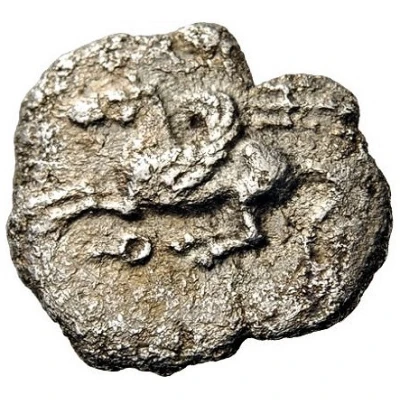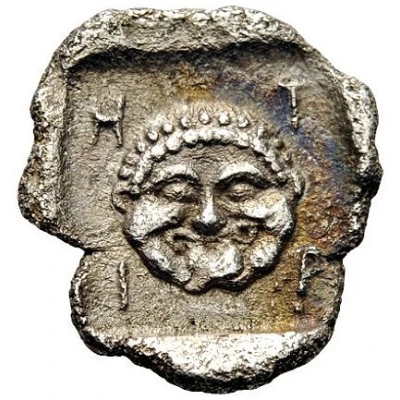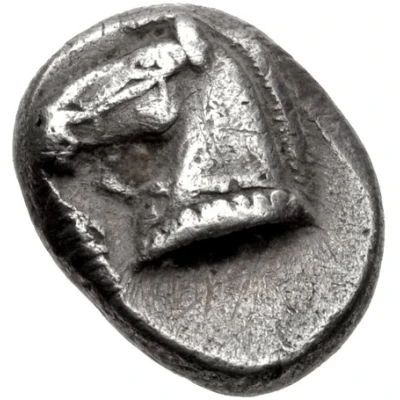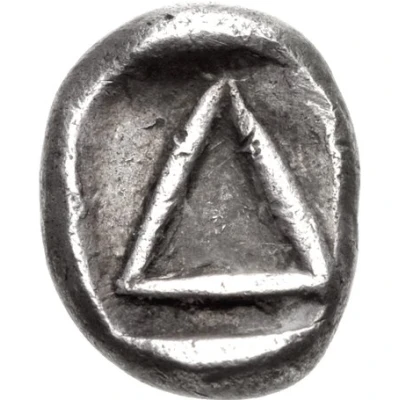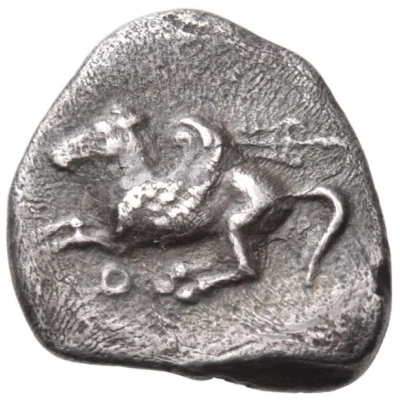
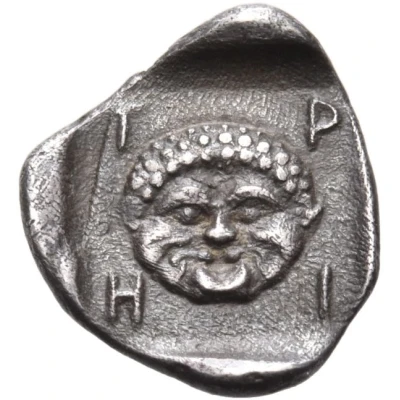

© Nomos AG
Trihemiobol 450 BC - 415 BC
| Silver | 0.65 g | 11 mm |
| Issuer | Corinth |
|---|---|
| Type | Standard circulation coin |
| Years | 450 BC - 415 BC |
| Value | Trihemiobol (¼) |
| Currency | Corinthian drachm |
| Composition | Silver |
| Weight | 0.65 g |
| Diameter | 11 mm |
| Shape | Round (irregular) |
| Technique | Hammered, Incuse |
| Orientation | Variable alignment ↺ |
| Demonetized | Yes |
| Updated | 2024-10-10 |
| Numista | N#410564 |
|---|---|
| Rarity index | 100% |
Reverse
Gorgoneion facing with tongue outstretched; all within incuse square.
Script: Greek
Lettering:
T-P
H-I
Comment
Berend, Reflexions, pl. 2, 7.
Interesting fact
The Trihemiobol coin was used in ancient Corinth during a time of great economic and cultural prosperity, and its design reflects the city's rich history and cultural influences. The obverse side of the coin features a depiction of the Greek goddess Athena, while the reverse side shows a Pegasus, a mythical winged horse that was a symbol of Corinth's prosperity and power. The coin's design was likely meant to symbolize the city's strong economic and cultural ties to the rest of the Greek world.
